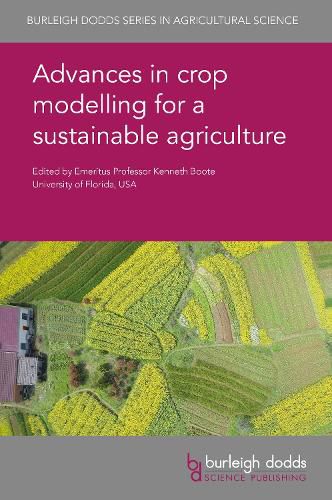Readings Newsletter
Become a Readings Member to make your shopping experience even easier.
Sign in or sign up for free!
You’re not far away from qualifying for FREE standard shipping within Australia
You’ve qualified for FREE standard shipping within Australia
The cart is loading…






This collection summarises key advances in crop modelling, with a focus on developing the next generation of crop and whole-farm models to improve decision making and support for farmers.
Chapters in Part 1 review advances in modelling individual components of agricultural systems, such as plant responses to environmental conditions, crop growth stage prediction, nutrient and water cycling as well as pest/disease dynamics. Building on topics previously discussed in Part 1, Part 2 addresses the challenges of combining modular sub-systems into whole farm system, landscape and regional models. Chapters cover topics such as integration of rotations and livestock, as well as landscape models such as agroecological zone (AEZ) models. Chapters also review the performance of specific models such as APSIM and DSSAT and the challenges of developing decision support systems (DSS) linked with such models. The final part of the book reviews wider issues in improving model reliability such as data sharing and the supply of real-time data, as well as crop model inter-comparison.
With its distinguished editor and range of experienced and expert chapter authors, this collection will be a standard reference for crop modellers and developers of decision support systems to improve the efficiency and sustainability of farming.
$9.00 standard shipping within Australia
FREE standard shipping within Australia for orders over $100.00
Express & International shipping calculated at checkout
This collection summarises key advances in crop modelling, with a focus on developing the next generation of crop and whole-farm models to improve decision making and support for farmers.
Chapters in Part 1 review advances in modelling individual components of agricultural systems, such as plant responses to environmental conditions, crop growth stage prediction, nutrient and water cycling as well as pest/disease dynamics. Building on topics previously discussed in Part 1, Part 2 addresses the challenges of combining modular sub-systems into whole farm system, landscape and regional models. Chapters cover topics such as integration of rotations and livestock, as well as landscape models such as agroecological zone (AEZ) models. Chapters also review the performance of specific models such as APSIM and DSSAT and the challenges of developing decision support systems (DSS) linked with such models. The final part of the book reviews wider issues in improving model reliability such as data sharing and the supply of real-time data, as well as crop model inter-comparison.
With its distinguished editor and range of experienced and expert chapter authors, this collection will be a standard reference for crop modellers and developers of decision support systems to improve the efficiency and sustainability of farming.